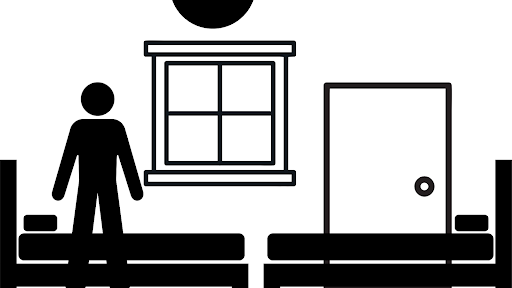With housing selection upon us, many Oklahoma Christian students are moving to new dorms or out into the apartments. Before college, most students had individual rooms with a bathroom and kitchen only shared by their family members, leading the largely communal “dorm life” to come with different levels of “cleanliness.” However, at what degree does the slightly unhygienic communal living space become a health hazard?
According to Hanah Jun, “heating and cooling issues were the most frequent complaint (for college students living in dorms). But some reported much more serious problems, including vermin and mold.” These issues go beyond a small amount of soap scum in the shower or leftover noodles in the kitchen sink and could potentially harm student health.
Many Oklahoma Christian students have experienced adverse conditions within the dormitories, like consistent unsolicited water shut offs due to the climate around their living quarters. But how bad is it really to live in Gunn-Henderson, University House, Davisson, Warlick, Fails, Tinius or Wilson?
A junior engineering student described her experience living in the dorms for four semesters, first in Gunn Henderson and then in University House. The student references the issues she faced with temperature regulation in the dorms, saying, “If the seasons change and we need to switch from AC to heater (or vice versa), the air control doesn’t work. Then we have to get maintenance involved. Otherwise, it works well.”
She also stated her overall environment as being less than ideal with “noisy neighbors [and] unhygienic shared environments.” While expected when living in a shared space with a large number of college students, this can be highly detrimental to the productivity of students.
Comparing and contrasting the comfort of the two dorms she lived in, the main distinguishing factor she noted was access to natural light. The student described the detrimental lack of natural light in her room at Gunn Henderson, whereas in University House, she felt more focused and “at home” with the readily available sunlight.
Another issue faced by Oklahoma Christian students in dorms is their ability to get living condition issues solved in a timely and proper fashion. An Oklahoma Christian student talked about her experience with needing maintenance, saying they would come to fix the problem “within a day or two” but “if they don’t visually see the problem, they will say there is no issue.”
Despite these negative reports, some students express no concerns about dorm conditions. Emma Head, a freshman studying marketing management, expressed appreciation for dorm life. She “feels the general environment is pretty good. Everything is relatively clean and a decent size.”
Furthermore, the overall aesthetic of her room has not acted detrimentally on her academics or personal life; she references she has regular access to natural light through her window, easy temperature control and an adequate amount of space.
An important contention to be made is each dorm room will have different concerns, benefits and detriments. Students should ensure they are selecting dorms to live in which will fit their needs.
For example, as referenced by the student above, the University House has more natural light, but comes with potential issues from unhygienic shared areas such as the kitchen. In contrast, Gunn-Henderson lacks the same degree of natural light needed to maintain productivity. To reference dorm layouts: Oklahoma Christian University | Residence Life (oc.edu)













Be First to Comment